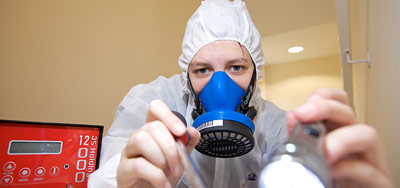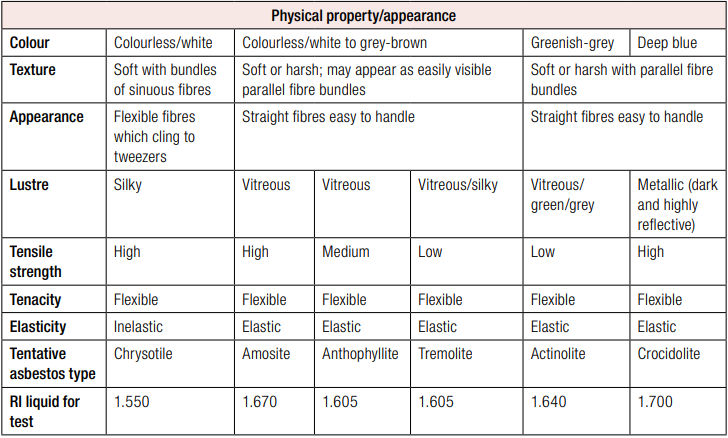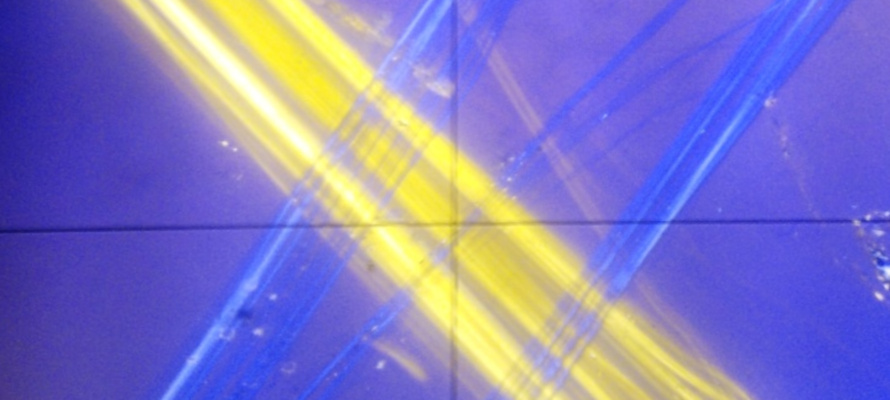Up to: < Testing
How to Test an Asbestos Sample
A prescribed test method for asbestos testing.

A commonly asked question is how does our laboratory test an asbestos sample? They use stero-microscopy, polarised light microscopy and dispersion staining. These techniques and processes are HSG 248 compliant and best practice.

Our laboratory completes asbestos analysis within dust cabinets. These all have negative pressure and high efficiency particulate air (HEPA) filters.
It is worth highlighting at this point that all asbestos testing must be completed by a UKAS accredited laboratory. Analysts completing the work must be P401 qualified (or equivalent).
We complete our UKAS accredited asbestos tests in two stages.
Asbestos Test Stage 1: Stereomicroscopy
Initial analysis uses a stereo microscope which provides a three dimensional view of samples. Each sample is opened within a dust cabinet, placed in a disposable petri dish and examined by eye.
Analysts identify fibres by appearance and physical properties. They look for certain characteristics in fibres that are consistent with asbestos. It is these properties that inform the choice of refractive index (RI) liquid for the next stage of analysis.
The table below confirms the type of RI liquid to use:

Source: Table A2.3 Use of physical properties and appearance under the stereo- microscope to determine choice of RI liquid for PLM identification of asbestos fibre type (HSG248 (Second Edition), 2021: 119).
Asbestos Test Stage 2: Polarised light microscopy
Analysts use RI liquids to identify asbestos fibres using a polarised light microscopy (PLM). They drop the appropriate RI liquid on to a slide outside of the dust cabinet. Next, inside the cabinet, they add the suspect fibre to the liquid and place a coverslip over the fibre. This sample mounting process gets the sample ready for the PLM analysis.
Analysts look for the following properties under filters on the PLM:
- Morphology
- Colour and pleochroism (if present)
- Extinction characteristics
- Sign of elongation
- Dispersion staining using the Mc Crones objective
This process enables the type of asbestos present in a sample to be identified (HSG 248, 2005). Analysts record each stage of their analysis within an approved database system, in our case, TEAMS.

The image above is an example of amosite elongation colours, as seen through a PLM.
The PLM method for identification of asbestos is qualitative not quantitative. It can only confirm the type of asbestos present in a sample, and not the concentration.
Our analysts repeat the stages outlined above for all suspected asbestos fibres contained within a sample.
How are negative samples tested?
Initial stereo microscopy may confirm that a sample has no visible fibres. If this is the case additional sample preparation is required. Then using tweezers or probes, our analysts would take random sub samples. From these, they will then create at least two microscope slide preparations and undertake PLM analysis.
Sample storage and disposal
Once the asbestos test is complete, the sample is double bagged and stored. Our analysts clean all surfaces of the sample bags. The disposable cleaning and sample holding materials are treated as asbestos waste. Our team store samples for six months. After this time, a registered asbestos disposal firm collect and dispose of the samples.



